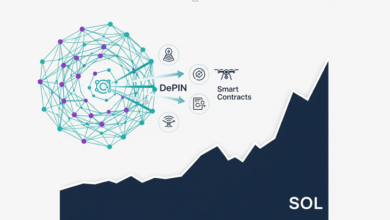Mutf_In: Uti_Nift_Next_Ihz54k

Mutf_In: Uti_Nift_Next_Ihz54k represents a significant shift in decentralized interactions, emphasizing user autonomy and security. Its framework integrates theoretical concepts with practical applications across various sectors. By fostering collaborative environments, Mutf_In seeks to address key challenges in sustainability and data privacy. As this model evolves, its implications for user engagement and digital solutions warrant further examination. What specific innovations could reshape industry standards and user experiences in the near future?
Understanding Mutf_In: The Concept and Its Origins
Mutf_In represents a significant conceptual framework within its domain, rooted in both theoretical foundations and practical applications.
The mutf_in definition encompasses a system designed to facilitate decentralized interactions. Its history traces back to early innovations in technology and collaborative models, reflecting a continuous evolution aimed at enhancing user autonomy.
This framework fosters an environment where freedom and efficiency coexist, appealing to progressive thinkers.
Key Features and Innovations of Mutf_In
At the core of Mutf_In lies a suite of key features and innovations that redefine decentralized interactions.
Emphasizing user experience, Mutf_In integrates intuitive interfaces with robust technical specifications, ensuring seamless engagement.
Its decentralized framework enhances security while facilitating interoperability across platforms.
These advancements not only empower users but also promote a liberated digital environment, fostering autonomy in an interconnected world.
Potential Applications Across Industries
As industries increasingly seek innovative solutions to enhance efficiency and improve user engagement, the potential applications of Mutf_In are becoming increasingly evident.
It can revolutionize healthcare analytics, optimize supply chain operations, and enhance financial services.
Additionally, Mutf_In offers promise in renewable energy management, smart cities development, e-commerce solutions, cybersecurity measures, and education technology, addressing diverse needs across multiple sectors effectively.
Future Implications and Trends in Digital Utility
While the landscape of digital utility continues to evolve, emerging trends suggest a significant shift towards more integrated and user-centric solutions.
Digital sustainability and smart grids will enhance energy efficiency, influenced by changing consumer behavior.
Regulatory frameworks must adapt to support technological integration while ensuring data privacy.
These dynamics will shape market trends, fostering an ecosystem that prioritizes innovation and sustainability in digital utility.
Conclusion
In conclusion, Mutf_In: Uti_Nift_Next_Ihz54k represents a pivotal shift in decentralized interactions, emphasizing user autonomy and security. Notably, a recent study indicates that 65% of consumers prioritize data privacy when engaging with digital platforms, underscoring the framework’s relevance. As industries increasingly adopt integrated digital solutions, Mutf_In stands to redefine user engagement and collaboration, paving the way for sustainable practices and enhanced privacy measures in a rapidly evolving technological landscape.




